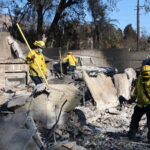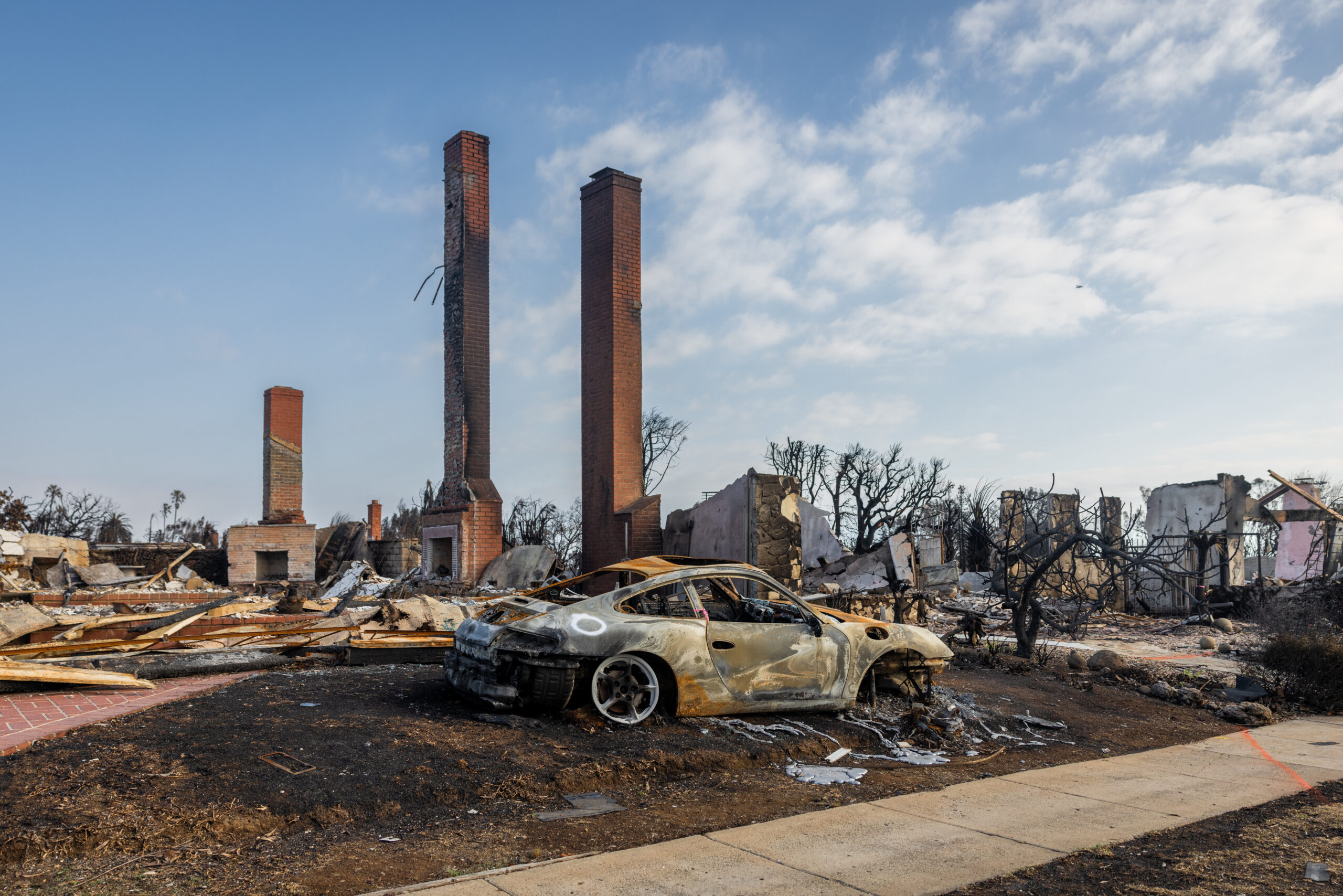Only 3 of 11 midsize luxury and near-luxury cars evaluated earn good or acceptable ratings in the Insurance Institute for Highway Safety’s latest tests designed to help consumers pick the safest vehicles.
The Acura TL and Volvo S60 earned good ratings, while the Infiniti G earned acceptable in what IIHS calls its new small overlap frontal crash test.
The Acura TSX, BMW 3 series, Lincoln MKZ and Volkswagen CC earned marginal ratings. The Mercedes-Benz C-Class, Lexus IS 250/350, Audi A4 and Lexus ES 350 earned poor. All of these cars are 2012 models.
In the test, 25 percent of a car’s front end on the driver side strikes a 5-foot-tall rigid barrier at 40 mph. A 50th percentile male Hybrid III dummy is belted in the driver seat. The test is designed to replicate what happens when the front corner of a car collides with another vehicle or an object like a tree or utility pole.
“Nearly every new car performs well in other frontal crash tests conducted by the Institute and the federal government, but we still see more than 10,000 deaths in frontal crashes each year,” Institute President Adrian Lund says. “Small overlap crashes are a major source of these fatalities. This new test program is based on years of analyzing real-world frontal crashes and then replicating them in our crash test facility to determine how people are being seriously injured and how cars can be designed to protect them better. We think this is the next step in improving frontal crash protection.”
Small overlap crashes accounted for nearly a quarter of the frontal crashes involving serious or fatal injury to front seat occupants. Small overlap crashes primarily affect a car’s outer edges, which aren’t well protected by crush-zone structures. Crash forces go directly into the front wheel, suspension system and firewall. It is not uncommon for the wheel to be forced rearward into the footwell, contributing to even more intrusion in the occupant compartment and resulting in serious leg and foot injuries.
Structurally, the Volvo S60 was best. With only a few inches of intrusion, the occupant compartment looked much the same as it did in a moderate overlap test. Reinforcement of the S60’s upper rails and a steel cross member below the instrument panel helped to keep the safety cage intact. Volvo has performed similar small overlap tests as part of its vehicle safety development process since the late 1980s, taking the results into account when designing new models.
The Lexus IS had up to 10 times as much occupant compartment intrusion as the Volvo. In the IS test, the car’s A-pillar bent and the footwell collapsed as the left front wheel and tire were forced rearward. The dummy’s left foot was entrapped by intruding structure, and its right foot was wedged beneath the brake pedal. Entrapment also was an issue with the Mercedes C-Class. The dummy’s right foot ended up wedged beneath the brake pedal as the left front wheel was forced rearward during the crash.
When the Volkswagen CC was put to the test, the driver door was sheared off its hinges. The CC is the first vehicle the Institute has ever evaluated to completely lose its door. An open door results in an automatic downgrade to poor for restraints and kinematics, as also was the case with the Audi A4, whose door opened but remained attached to the car. Doors should stay closed in a crash to keep people from being partially or completely ejected from vehicles.
Restraint Systems’ Key Role
Safety belts and airbags are important in any crash configuration, and they are especially taxed in small overlap frontal crashes. When cars strike the test barrier they tend to move sideways away from it, and the interior structures including the driver door, side window and A-pillar move in the same direction. The test dummy, however, keeps moving forward into the path of the sideways-moving interior structures. At the same time, the steering column and driver airbag move inboard in many vehicles because of the way the front end and occupant compartment deform. If the dummy misses the airbag or slides off it, the head and chest are unprotected.
Front airbags are calibrated to deploy in these types of crashes. Side airbags, including head-protecting curtains and chest-protecting torso airbags, don’t always deploy because they are designed mainly for true side impacts — think so-called T-bone crashes at intersections. When they do deploy, they don’t always do so early enough or extend far enough forward to adequately protect people. The result is an airbag gray zone with gaps between what front airbags cover and what side airbags do — if they deploy at all.
Without airbag protection, people in real-world small overlap frontal crashes can sustain head injuries from direct contact with the A-pillar, dashboard or window sill or by hitting trees, poles or other objects. Chest injuries happen when people contact the steering wheel, door or other intruding structures.
Every luxury car and near-luxury car the Institute evaluated earns good ratings for head, neck and chest injury risk based on measurements from the dummy’s sensors. This is true even though there are many cases of serious upper body injuries in real-world crashes with similar vehicle damage.
One possible reason for the differing results is that real people move more during a crash and are prone to be out of position at the start, compared with relatively stiff and precisely positioned crash test dummies. Not all drivers are the same size as the dummy or seated exactly the same way. A close call for the dummy could mean an actual injury for a person.
In several crash tests, the dummy’s head barely missed the intruding structure of the vehicle, where a real person may have made contact and sustained an injury. Another reason is that the frontal crash dummy the Institute uses in the small overlap test is not good at measuring risks from lateral forces. Side crash dummies do a better job of this but can’t sense — or record — much of the frontal action in these tests.
Side curtain and torso airbags deployed in the Acura TL and Volvo S60, although the S60’s torso airbag fired too late in the crash to protect the dummy’s chest from potential contact with side structures. One or both of the curtain and torso airbags didn’t deploy in seven of the cars evaluated. Of the six curtains that deployed, four didn’t provide sufficient forward coverage. The Institute lowered restraint and kinematics scores if side airbags didn’t deploy or coverage was lacking.
“Side curtain airbags and torso airbags are designed to deploy in side impacts, but they can be beneficial in small overlap frontal crashes as well,” Lund says. “If they do deploy, curtain airbags also need to extend far enough forward to protect the head from contact with side structures and outside objects.”
For example, in the Lincoln MKZ test, the dummy’s head and chest completely missed the front airbag as the steering column moved to the right. The side curtain airbag deployed but didn’t extend far enough forward to protect the dummy’s head. In comparison, the Acura TL’s front and side curtain airbags worked well together to keep the head from coming close to any stiff structures or objects that could cause injury.
Engineers at some manufacturers have indicated that they are adjusting airbag algorithms to deploy side airbags in small overlap frontal crashes. Mercedes, for example, plans changes for the current C-Class.
Another restraint and kinematics issue Institute engineers flagged was excessive forward movement of the driver dummy caused by too much shoulder belt webbing spooling out of the retractor. This was the case with the BMW, Mercedes and Volkswagen. Like most new vehicles, these cars have safety belts equipped with load limiters that allow occupants’ upper bodies to move forward in frontal crashes when belt loads exceed a specific threshold. Load limiters allow some belt spoolout after the initial impact to reduce belt-force-related thoracic injuries such as rib fractures by allowing people to ride down deflating front airbags. However, too much spoolout can compromise belt effectiveness by allowing belted occupants to move enough to strike hard surfaces inside the vehicle. This concern is greater in small overlaps where occupants may load only a small part of the front airbag or miss it completely.
Tougher Award criteria
The Institute’s Top Safety Pick award recognizes passenger vehicles that do the best job of protecting people in front, side, rollover and rear crashes based on ratings in Institute evaluations. The front rating is based on the moderate overlap test.
The Institute plans to make the top award criteria more stringent by adding the small overlap frontal test to its battery of evaluations. The existing criteria will continue for the 2013 award cycle, but vehicles that excel in the new test will be recognized.
“We won’t have evaluated many vehicles in the small overlap test in time for the 2013 award,” Lund explains. “Models meeting the current award criteria still offer outstanding protection in most crashes, and they will continue to earn Top Safety Pick in 2013. However, those vehicles that also do well in the new test will get to claim a higher award level that will be announced later this year.”
The Institute has tightened award criteria twice since the first winners were announced for 2006 models. Good rear test results and availability of electronic stability control became a requirement starting with 2007 models, and a good roof strength rating became a deciding factor for 2010 models. Stability control is no longer a separate requirement since all 2012 and later vehicles must have the feature as standard under federal rules.
Automakers have been quick to rise to the occasion whenever the Institute has added a new evaluation to its vehicle test program, and the small overlap test should be no exception.
“Manufacturers recognize that this crash mode poses a significant risk to their customers and have indicated they plan structural and restraint changes to improve protection in small overlap frontal crashes,” Lund says.
Next, the Institute will assess midsize moderately priced cars, including such top-selling models as the Ford Fusion, Honda Accord and Toyota Camry.
Source: Insurance Institute for Highway Safety
Was this article valuable?
Here are more articles you may enjoy.

 Auto Insurer Fined for Data Breach That Impacted 45K New Yorkers
Auto Insurer Fined for Data Breach That Impacted 45K New Yorkers  Deutsche Bank, Mudrick Sue Ambac Over $65 Million Transfer
Deutsche Bank, Mudrick Sue Ambac Over $65 Million Transfer  New Fire Maps Put Nearly 4M Californians in Hazardous Zones
New Fire Maps Put Nearly 4M Californians in Hazardous Zones  Wall Street Brokers Start Trading Insurer Claims From LA Fires
Wall Street Brokers Start Trading Insurer Claims From LA Fires 